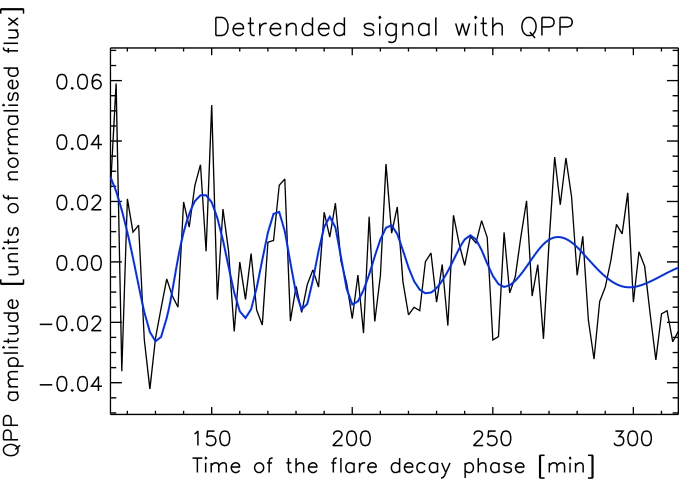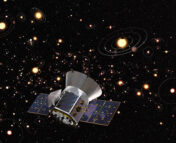This guest post was written by Riley Clarke – “I’m a fifth year Ph.D student at the University of Delaware, where I work on enabling the study of stellar flares in the Vera C. Rubin Legacy Survey of Space and Time (LSST) by taking advantage of atmospheric refraction. I also work on a project called Rubin Rhapsodies, which combines astrophysical and musical expertise to sonify LSST data for enhanced exploration and research inclusion. Outside of research I enjoy playing guitar and tabletop roleplaying games.”

Authors: Gavin Ramsay, Dmitrii Kolotkov, J. Gerry Doyle, Lauren Doyle
First Author’s Institution: Armagh Observatory and Planetarium, College Hill, Armagh, BT61 9DG, N. Ireland, UK
Status: Published in Solar Physics [open access]
New Eyes on Cosmic Storms
In September 1859, amateur English astronomer Richard Carrington observed a singularly powerful geomagnetic storm and bright solar flare during an event which now bears his name. Using a solar telescope of his own design, he was able to make detailed observations of sunspots and sketch their shape and location on the sun’s surface. He made one such sketch on the day of the 1859 storm (Figure 1), where he marked the position of an “intensely bright event,” the first human observation of a solar flare. It is believed that a Carrington-level flare today could cause global blackouts and damage to electrical infrastructure that could take years to repair.
Flares such as the one Carrington observed occur not only on the Sun, but also on other stars as a result of energy released when the star’s magnetic field lines get contorted and then reconnect. Now that astronomers have access to data from instruments such as NASA’s Kepler Space Telescope and Transiting Exoplanet Space Telescope (TESS) to measure the light of other stars, they are able to make incredibly precise measurements of how a flare’s brightness evolves over time, a measurement known as a “light curve.”

Unusual Flares
Flares typically share a common brightness profile, with a rapid initial rise in brightness followed by a slower decay. However, flares often deviate from this pattern and display more complex behavior, including what are known as “quasi-periodic pulsations” (QPPs). This means that during the decay phase, the brightness fluctuates up and down in a semi-regular way. These QPPs are of interest to astronomers who want to learn more about the mechanisms behind flare generation and how they affect the star-planet environment, such as the authors of today’s paper.
The authors combed through lightcurves measured by TESS, and found 7 M-dwarfs with candidate QPPs, one of them shown in Figure 2. Because the pulsation is not precisely periodic, detecting them is tricky, so they used a method called Empirical Mode Decomposition (EMD) to determine what the most statistically likely mean period of the oscillation is.

A “Sweet Spot” for Life?
So what’s interesting about these flares and their pulsations? It’s well known that flares can be a problem for both nascent life and civilizations like our own. As much as 20% of a flare’s energy is emitted as ultraviolet light, which can erode the ozone layer of planets hit by a flare. However, in just the right amounts, it’s thought that flares could actually aid the development of primordial life as well. The 1952 Miller-Urey experiment, which sought to recreate conditions of the primordial soup on Earth, used simulated lightning as the energy catalyst to create complex organic compounds like amino acids from simpler, inorganic precursors, a process known as “abiogenesis”. Since then, it has been proposed that ultraviolet radiation produced by flares could serve as the energy catalyst in these early chemical reactions.
In Figure 3, the authors show the set of “flare frequency distributions” (FFDs) for the 7 stars they examined. These distributions describe how often flares of a given energy are generated. Combining work done by Günther et al. (2020), Tilley et al. (2019), Rimmer et al. (2018), they display the seven FFDs on top of two regions in the frequency-energy space: one where abiogenesis enabled by ultraviolet light from flares is thought to be possible, and another where the ultraviolet light produced erodes the planet’s ozone layer. They note that the FFD of three stars lie in the abiogenesis zone, though two of them also intersect the ozone depletion zone.

Lastly, the authors discuss how QPPs affect exoplanets orbiting M dwarfs. Studies of solar QPPs showed that QPP-driven perturbations of Earth’s ionosphere could result in phenomena such as acoustic gravity waves in the ocean and disruption to high frequency radio waves. The implications of these effects for primordial life is unclear, but could pose threats to civilizations like our own. Given their capability to either jump-start or destroy the crucible of primeval life, understanding the nature of stellar flares is an important aspect to one of the most compelling questions in astronomy: where in the universe can life exist?
Astrobite edited by: Lili Alderson
Featured image credit: Page 540 of the Nov-Dec, 2007 issue of American Scientist (volume 95)




